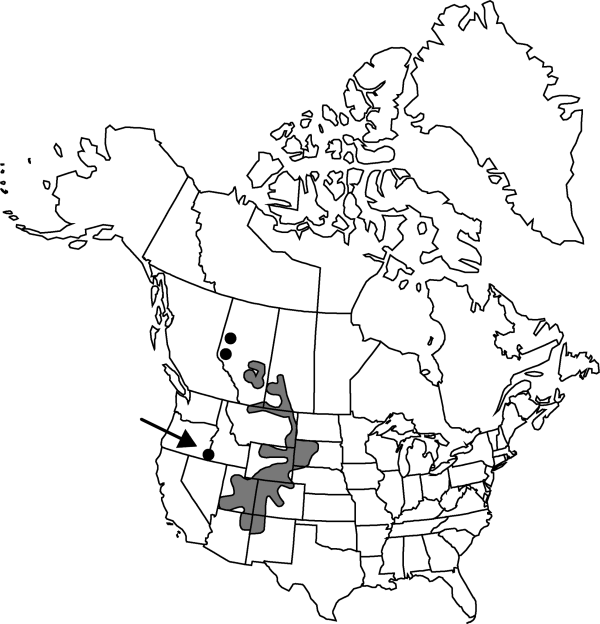Atriplex powellii var. powellii
Herbs, dioecious or sometimes monoecious, (0.5–)1–5(–7) dm. Leaves on petioles 0.3–2.5(–3.5) cm proximally, becoming subsessile (rarely sessile) or more commonly short petiolate distally, blade conspicuously 3-veined, deltoid-ovate to orbicular-ovate or cordate-ovate to elliptic, 5–25(–35) mm and about as wide, base acute or cuneate to obtuse or subcordate, scurfy. Flowers of both sexes intermixed in axillary glomerules, or borne on separate plants. Staminate flowers 5-merous. Fruiting bracteoles sessile, oval to obovate, 1.5–5.5 1.5–5 mm, apical tooth central to 2 rounded lobes, sometimes constricted basally, giving an overall violin shape, sometimes slenderly appendaged marginally and faces often obscured by appendages. Seeds yellowish brown or greenish, 1–1.5(–2) mm.
Phenology: Flowering summer–fall.
Habitat: Saline, usually fine-textured clay or silty substrates, in greasewood, rabbitbrush, shadscale, seepweed, mat-atriplex, juniper-pinyon, and blackbrush communities
Elevation: 700-2000 m
Distribution

Alta., Sask., Ariz., Colo., Idaho, Mont., Nebr., N.Mex., Oreg., S.Dak., Utah, Wyo.
Discussion
This rather widely distributed annual approaches being truly dioecious, but in occasional specimens the flowers of the opposite gender are present, intermixed in glomerules, as in Atriplex powellii var. minuticarpa, resulting in monoecious individuals. Peculiar specimens are known which display hemispheric clusters of staminate flowers to 6 mm wide, especially on the west side of the San Rafael Swell in Utah; perhaps they are mere teratological forms. The species sometimes forms extensive stands on raw exposed geological strata in eastern Utah, especially on the Mancos Shale and its subordinate strata.
Selected References
None.